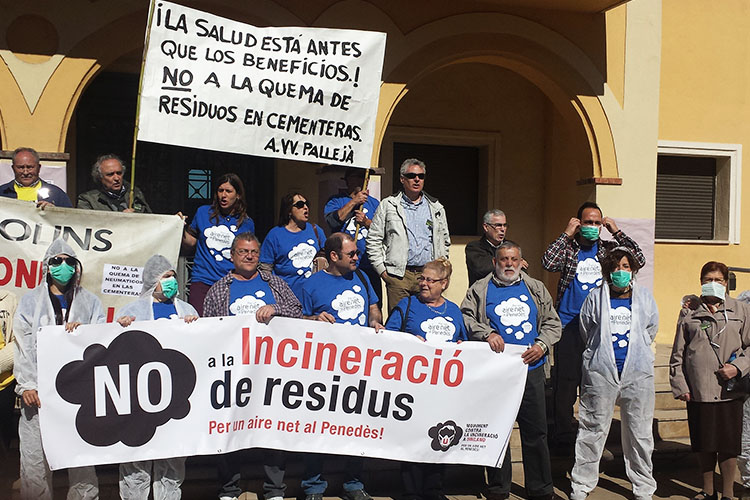Spanish Study: Link Between Cement Kilns and Cancer
 Although it was first published last July, news of a new Spanish epidemiological study of residents living in proximity to cement plants has just now reached us.
Although it was first published last July, news of a new Spanish epidemiological study of residents living in proximity to cement plants has just now reached us.
Done by the the same researchers responsible for a 2012 study that found statistically significant increases in all cancers around waste incineration and auto scrap metal operation, this more recent report focuses just on cement, lime and plaster plants.
According to the researchers, a statistically signifiant increase in all cancer mortality was detected in the vicinity of these installations as a whole, but principally, in the vicinity of cement installations. Specifically, tumors of the colon–rectum in both sexes and of the pleura peritoneum, gallbladder, bladder and stomach in men were noticably higher. In a summary of the results, the authors state they believe residents have "an excess risk of dying from cancer, especially in colon–rectum, in towns near these industries."
Because they take such a long time and so much effort, there's a dearth of epidemiological studies focused entirely on cancer risks among those living in proximity to cement plants, although a 2004 Italian study found a significantly greater risk of lung cancer among people living near a cement factory (whereas the results of another Italian study confirmed significant excesses for cancers like the nervous system, leukemia, mesothelioma and peritoneum in a region with the presence of various industries including cement factories.
In explaining the higher incidence of gut cancers among both men and women, the study hypothesizes about the possible ways local residents are exposed to carcinogens:
In our study, one aspect to be borne in mind is that colorectal
cancer is the only tumor with statistically significant excess risks
in men and women, which might be indicative of a pathway of
environmental exposure. In this case, two possible routes of exposure
to the pollution released by these installations are considered:
direct exposure to pollutants released to air; and indirect exposure,
both to pollutants and liquid effluents which are released to water
and can then pass into the soil and aquifers, and pollutants which
are released to air and then settle on plants. In such cases, the toxins
may pass into the trophic chain, affecting the population.Some authors have already shown associations between colorectal cancer and proximity to industrial pollution sources as metal industries (Garcia-Perez et al., 2010), mining (Fernandez-Navarro et al.,2012), food and beverage sector (Lopez-Abente et al., 2012) andchemical plants (Wilkinson et al., 1997). As regards cement plants,
a Brazilian study found a significant elevation on colorectal cancer
mortality in an industrialized area with cement industries came
into operation in the 1960s, among other facilities (Medrado-
Faria et al., 2001), and a Korean occupational study suggested a
potential association between exposure in the cement industry
and an increased risk of rectal cancer (Koh et al., 2013).
One thing a lot of these overseas studies and the Midlothian area have in common is a concentration of heavy industry. There's usually more than one facility and the region is considered an industrial corridor. That's certainly true of Midlothian, where besides hosting three large cement plants, the town is also home to a huge secondary steel mill, a power plant, and now an LNG plant. These industries combine to present a multitude of possible synergestic combinations of toxins to anyone living adjacent to, or downwind of them. "Toxic soup" is a term often used to describe the result.
This is also why the law lags behind the science in setting standards for cause and effect. When it's the cascade of chemicals from various facilities assaulting you, you're rarely going to be able to link a particular disease or illness with a specific plant. And yet the harm is happening all the same. This is why institutionalizing the "Precautionary Principle" into public policy is so important. It's much easier to prevent a chemical exposure than to track all of its ill effects after it's already doing damage.
